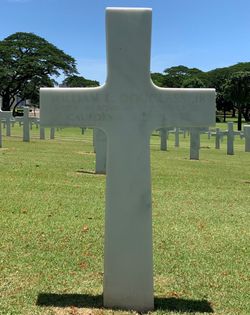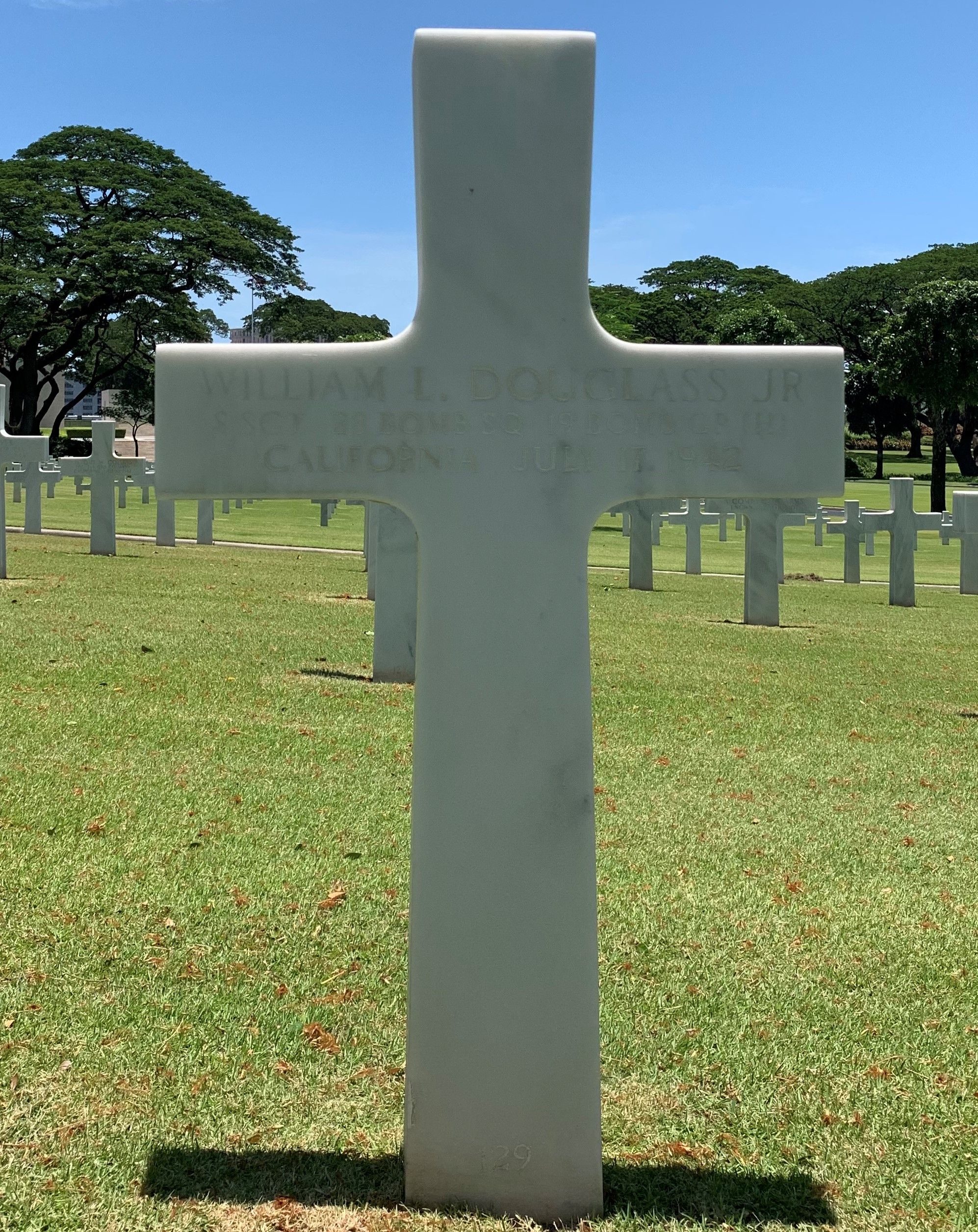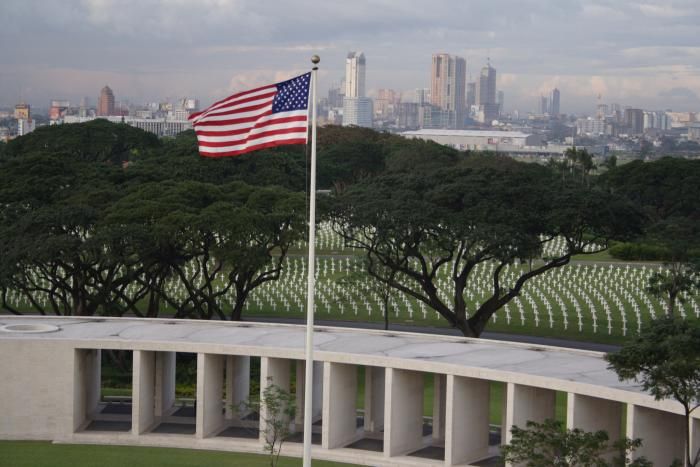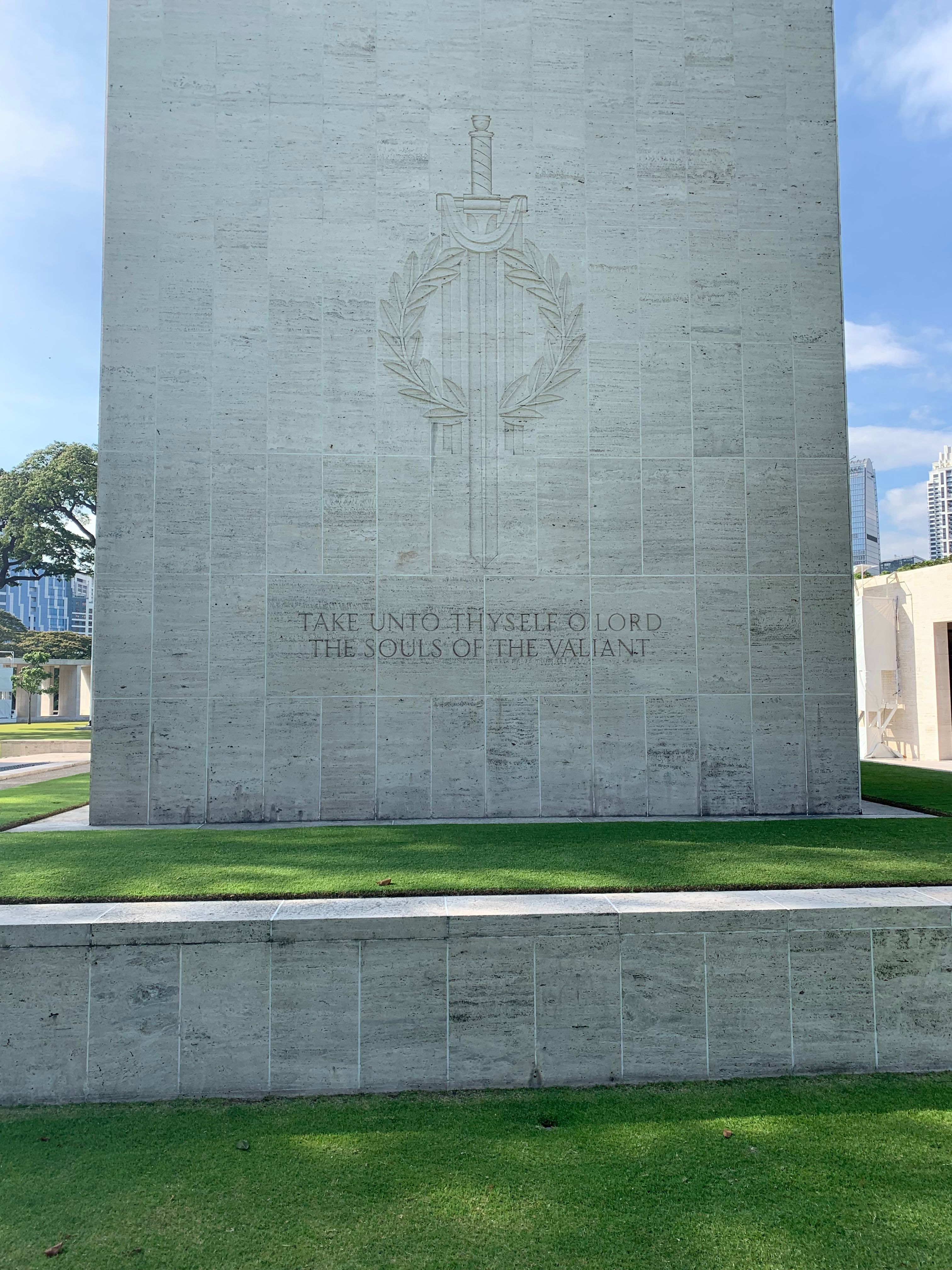Service # 6551933
Rank: Staff Sergeant, U. S. Army Air Corps
Unit: 28th Bomber Squadron, 19th Bomber Group, Heavy
Entered Service From: California
Date of Death: 17 July 1942, of of dysentery and malaria in the Japanese POW Camp 1, Cabanatuan, Nueva Province, Luzon, Philippines 15-121.
Buried: Manila American Cemetery – Plot H, Row 6, Grave 129.
~~~~~~~~~~~~~~~~~~~~~~~~~~~~~~~~~~~~~~~~~~~~~~~~~~~~~~~~~~~~~~~~~~~~~~~~~~~~~~~~~
1920 United States Federal Census (15 January 1920): Los Angeles, Los Angeles County, California (sheet 20A, family 348, 160 West 62nd St) – William L. Douglass (4 California).
1930 United States Federal Census (09 April 1930): Los Angeles, Los Angeles County, California (sheet 12A, family 270) – William L. Douglass (14 California).
Monthly Roster of Troops 27 February 1934 thru 31 March 1937
Company A, 30th Infantry Regiment, Presidio of San Francisco, California
Private/Private First Class William L. Douglass Jr. (S/N 6551933) joined Company A, on 27 February 1934 from Fort MacArthur, California. He was given a 30 day furlough on 01 October 1935. William rejoined his company on 30 October. He was "DS" on 09 April to San Diego and was there thru 16 September 1936 (he was still listed on the roster even though he was in San Diego those 5 months. William was promoted to Private First Class that month and given a 30 day furlough starting the 28 of September 1936. He rejoined Company A on 28 October 1936. PFC William L. Douglass Jr. was honorably discharged on 31 March 1937.
Monthly Roster of Troops 29 April 1938 thru 09 June 1939
32nd Bombardment Squadron, GFQ AF, March Field California
Private William L. Douglass Jr. (S/N 6551933) enlisted, was assigned and joined the 32nd Bombardment Squadron on 29 April 1938. He was given a furlough on 01 March 1939. He rejoined his unit on 30 April 1939. Private William L. Douglass Jr. was honorably discharged 09 June 1939 (Cov of Govt) to reenlist (par 60b, AR 615-360). He reenlisted the next day.
William L. Douglass (1915), a resident of Los Angeles County, California, reenlisted as a Private (S/N 6551933) in the U.S. Army Air Corps on 10 June 1939. He was single, had completed 2 years of college and in civilian life had been employed in the production of petroleum.
Private Douglass was sent to the Philippine Islands and assigned to the 28th Bombardment Squadron, 19th Bomber Group, Heavy, U.S. Army Air Corps at Clark Field, Fort Stotsenburg, north of Manila.
Monthly Roster of Troops 01 August 1939 thru 31 October 1939
28th Bombardment Squadron, Air Corps, Clark Field, Fort Stotsenburg, Philippine Islands
Private/Private First Class/Corporal William L. Douglass Jr. (S/N 6551933) joined the 28th Bombardment Squadron on 01 August 1939. He was promoted to Private First Class in November 1939. He was "DS" to Nichols Field on 07 November 1939. He was promoted to Corporal in December 1939.
War with Japan broke out on 08 December 1941. Japanese forces began a full-scale invasion of Luzon on 22 December. In response, General Douglas MacArthur, ordered the withdrawal of the American and Filipino forces to the Bataan peninsula to be a part of the Bataan Defense Force. On Christmas Eve of 1941, the 28th evacuated Clark Field and went by train to Bataan.
The men of the 28th Bombardment Squadron were assigned infantry duty as part of the Bataan Defense force. "Their newly formed units were referred to as Provisional Infantry Regiments. These Provisional Infantry units were composed of air men, who in most cases had never had any infantry combat training. Most had to be taught how to put bullets into their rifles and how to use hand grenades, and how to dig a proper foxhole. It was akin to on-the-job training. Although clumsy, at times, comical, and, at times, very shaky, they performed valiantly. It was not pretty, but they did their job.
On January 9th, the battle for Bataan began.
From the very beginning, Bataan men were cut to 1/2 rations, and very soon, to 1/4 rations. About four weeks later, they were living on 1/8 rations, that is, when food was available to them. Towards the end, it was changed to 1/16th of their rations...Quite often, they would go several days with no food, unless they could catch something in the jungle." Source: Federico Baldassarre letter
In the wake of starvation came diseases, such as malaria, dengue, scurvy, beriberi and amebic dysentery. The average American soldier lost 15-25 pounds and malaria was as high as 35 percent among front line units.
On Good Friday, 03 April 1942, General Homma, with the addition of fresh troops, began an all-out offensive on Bataan. By the evening of April 8, the situation was clearly hopeless. With ammunition, rations and supplies practically exhausted and most of his best units destroyed, Maj. Gen. King, commander of the forces on Bataan, was convinced his troops could not physically resist any more and decided to surrender to prevent further loss of life. On 09 April 1942, Maj. Gen. King surrendered the Luzon Force to the Japanese. Numbering more than 75,000 Filipinos and Americans, it was the largest American army in history to surrender.
Following the surrender, the weakened and diseased defenders of Bataan, including Staff Sergeant Douglass, were subjected to infamous Bataan Death March by their Japanese captors. When the Fil-American soldiers began the Death March they were in terrible physical condition. For 6 to 9 days (depending on their starting point) they were forced to walk the roughly sixty-five miles to San Fernando, enduring abuse by Japanese guards and seeing the deaths of thousands of fellow soldiers. At San Fernando, the Japanese stuffed about 100 men into steel-sided boxcars for the twenty-five-mile trip to Capas. The scorching hot boxcars were packed so tight that the men could not even sit down. When the train arrived at Capas the POW's were offloaded and marched the final nine miles to Camp O'Donnell.
Surviving the brutal treatment by the Japanese at Camp O'Donnell (about 1500 American and 22,000 Filipino prisoners of war died in just three months) S/Sgt. William L. Douglass was transferred to the Cabanatuan POW Camp No. 1, approximately 8 kilometers west of the town by the same name.
In early June of 1942, prisoners from Camp O'Donnell began to stream into Camp No. 1, joining the men from Corregidor and increasing the number of prisoners to over 7,300 men. Because of the poor health of the men from O'Donnell, the death rate at Camp #1 soared.
Staff Sergeant William L. Douglass (S/N 6551933), age 26, died at 02:00 am, 17 July 1942, of dysentery and malaria, in *Barracks #0, hospital area. Sadly, it was called the "zero" ward, due to the fact that a prisoner had virtually "zero" chance of leaving it alive, serving as a place to put seriously ill or dying patients. His death was recorded on a condensed milk can label. He was one of 13 men to die that day, the 958th prisoner to die in the camp since in opened in June. In all 786 men died in the prison during the month of July. By the time the camp was liberated in early 1945, 2,764 Americans had died at Cabanatuan in 2½ years. 90% of the POW deaths in Cabanatuan were men who were captured on Bataan.
*The prisoners referred to this area as "Zero Ward," because those were the chances of getting out of "Zero Ward" alive.
He was buried in a communal grave in the camp cemetery along with other deceased American POWs who died that day. After the war, all the remains in the Cabanatuan Prison cemetery that could be found were disinterred (between December 1945 - February 1946) and brought to 7747 USAF Cemetery, Manila #2, Philippine Islands. He was reburied in Block 3, Row 21, Grave 2664 (D-D 5194). The deceased in Manila #2 (over 11,000 American soldiers) rested there until their removal to the American Graves Registration Service Manila Mausoleum in the summer of 1948. From there, according to the wishes of his next of kin (mother, Mrs. Jule Douglass), Staff Sergeant William L. Douglass was buried in his final resting place in the 7701 Ft. McKinley Cemetery (now known as the Manila American Cemetery) – Plot H, Row 6, Grave 129.
Service # 6551933
Rank: Staff Sergeant, U. S. Army Air Corps
Unit: 28th Bomber Squadron, 19th Bomber Group, Heavy
Entered Service From: California
Date of Death: 17 July 1942, of of dysentery and malaria in the Japanese POW Camp 1, Cabanatuan, Nueva Province, Luzon, Philippines 15-121.
Buried: Manila American Cemetery – Plot H, Row 6, Grave 129.
~~~~~~~~~~~~~~~~~~~~~~~~~~~~~~~~~~~~~~~~~~~~~~~~~~~~~~~~~~~~~~~~~~~~~~~~~~~~~~~~~
1920 United States Federal Census (15 January 1920): Los Angeles, Los Angeles County, California (sheet 20A, family 348, 160 West 62nd St) – William L. Douglass (4 California).
1930 United States Federal Census (09 April 1930): Los Angeles, Los Angeles County, California (sheet 12A, family 270) – William L. Douglass (14 California).
Monthly Roster of Troops 27 February 1934 thru 31 March 1937
Company A, 30th Infantry Regiment, Presidio of San Francisco, California
Private/Private First Class William L. Douglass Jr. (S/N 6551933) joined Company A, on 27 February 1934 from Fort MacArthur, California. He was given a 30 day furlough on 01 October 1935. William rejoined his company on 30 October. He was "DS" on 09 April to San Diego and was there thru 16 September 1936 (he was still listed on the roster even though he was in San Diego those 5 months. William was promoted to Private First Class that month and given a 30 day furlough starting the 28 of September 1936. He rejoined Company A on 28 October 1936. PFC William L. Douglass Jr. was honorably discharged on 31 March 1937.
Monthly Roster of Troops 29 April 1938 thru 09 June 1939
32nd Bombardment Squadron, GFQ AF, March Field California
Private William L. Douglass Jr. (S/N 6551933) enlisted, was assigned and joined the 32nd Bombardment Squadron on 29 April 1938. He was given a furlough on 01 March 1939. He rejoined his unit on 30 April 1939. Private William L. Douglass Jr. was honorably discharged 09 June 1939 (Cov of Govt) to reenlist (par 60b, AR 615-360). He reenlisted the next day.
William L. Douglass (1915), a resident of Los Angeles County, California, reenlisted as a Private (S/N 6551933) in the U.S. Army Air Corps on 10 June 1939. He was single, had completed 2 years of college and in civilian life had been employed in the production of petroleum.
Private Douglass was sent to the Philippine Islands and assigned to the 28th Bombardment Squadron, 19th Bomber Group, Heavy, U.S. Army Air Corps at Clark Field, Fort Stotsenburg, north of Manila.
Monthly Roster of Troops 01 August 1939 thru 31 October 1939
28th Bombardment Squadron, Air Corps, Clark Field, Fort Stotsenburg, Philippine Islands
Private/Private First Class/Corporal William L. Douglass Jr. (S/N 6551933) joined the 28th Bombardment Squadron on 01 August 1939. He was promoted to Private First Class in November 1939. He was "DS" to Nichols Field on 07 November 1939. He was promoted to Corporal in December 1939.
War with Japan broke out on 08 December 1941. Japanese forces began a full-scale invasion of Luzon on 22 December. In response, General Douglas MacArthur, ordered the withdrawal of the American and Filipino forces to the Bataan peninsula to be a part of the Bataan Defense Force. On Christmas Eve of 1941, the 28th evacuated Clark Field and went by train to Bataan.
The men of the 28th Bombardment Squadron were assigned infantry duty as part of the Bataan Defense force. "Their newly formed units were referred to as Provisional Infantry Regiments. These Provisional Infantry units were composed of air men, who in most cases had never had any infantry combat training. Most had to be taught how to put bullets into their rifles and how to use hand grenades, and how to dig a proper foxhole. It was akin to on-the-job training. Although clumsy, at times, comical, and, at times, very shaky, they performed valiantly. It was not pretty, but they did their job.
On January 9th, the battle for Bataan began.
From the very beginning, Bataan men were cut to 1/2 rations, and very soon, to 1/4 rations. About four weeks later, they were living on 1/8 rations, that is, when food was available to them. Towards the end, it was changed to 1/16th of their rations...Quite often, they would go several days with no food, unless they could catch something in the jungle." Source: Federico Baldassarre letter
In the wake of starvation came diseases, such as malaria, dengue, scurvy, beriberi and amebic dysentery. The average American soldier lost 15-25 pounds and malaria was as high as 35 percent among front line units.
On Good Friday, 03 April 1942, General Homma, with the addition of fresh troops, began an all-out offensive on Bataan. By the evening of April 8, the situation was clearly hopeless. With ammunition, rations and supplies practically exhausted and most of his best units destroyed, Maj. Gen. King, commander of the forces on Bataan, was convinced his troops could not physically resist any more and decided to surrender to prevent further loss of life. On 09 April 1942, Maj. Gen. King surrendered the Luzon Force to the Japanese. Numbering more than 75,000 Filipinos and Americans, it was the largest American army in history to surrender.
Following the surrender, the weakened and diseased defenders of Bataan, including Staff Sergeant Douglass, were subjected to infamous Bataan Death March by their Japanese captors. When the Fil-American soldiers began the Death March they were in terrible physical condition. For 6 to 9 days (depending on their starting point) they were forced to walk the roughly sixty-five miles to San Fernando, enduring abuse by Japanese guards and seeing the deaths of thousands of fellow soldiers. At San Fernando, the Japanese stuffed about 100 men into steel-sided boxcars for the twenty-five-mile trip to Capas. The scorching hot boxcars were packed so tight that the men could not even sit down. When the train arrived at Capas the POW's were offloaded and marched the final nine miles to Camp O'Donnell.
Surviving the brutal treatment by the Japanese at Camp O'Donnell (about 1500 American and 22,000 Filipino prisoners of war died in just three months) S/Sgt. William L. Douglass was transferred to the Cabanatuan POW Camp No. 1, approximately 8 kilometers west of the town by the same name.
In early June of 1942, prisoners from Camp O'Donnell began to stream into Camp No. 1, joining the men from Corregidor and increasing the number of prisoners to over 7,300 men. Because of the poor health of the men from O'Donnell, the death rate at Camp #1 soared.
Staff Sergeant William L. Douglass (S/N 6551933), age 26, died at 02:00 am, 17 July 1942, of dysentery and malaria, in *Barracks #0, hospital area. Sadly, it was called the "zero" ward, due to the fact that a prisoner had virtually "zero" chance of leaving it alive, serving as a place to put seriously ill or dying patients. His death was recorded on a condensed milk can label. He was one of 13 men to die that day, the 958th prisoner to die in the camp since in opened in June. In all 786 men died in the prison during the month of July. By the time the camp was liberated in early 1945, 2,764 Americans had died at Cabanatuan in 2½ years. 90% of the POW deaths in Cabanatuan were men who were captured on Bataan.
*The prisoners referred to this area as "Zero Ward," because those were the chances of getting out of "Zero Ward" alive.
He was buried in a communal grave in the camp cemetery along with other deceased American POWs who died that day. After the war, all the remains in the Cabanatuan Prison cemetery that could be found were disinterred (between December 1945 - February 1946) and brought to 7747 USAF Cemetery, Manila #2, Philippine Islands. He was reburied in Block 3, Row 21, Grave 2664 (D-D 5194). The deceased in Manila #2 (over 11,000 American soldiers) rested there until their removal to the American Graves Registration Service Manila Mausoleum in the summer of 1948. From there, according to the wishes of his next of kin (mother, Mrs. Jule Douglass), Staff Sergeant William L. Douglass was buried in his final resting place in the 7701 Ft. McKinley Cemetery (now known as the Manila American Cemetery) – Plot H, Row 6, Grave 129.
Family Members
Other Records
Sponsored by Ancestry
Advertisement
Advertisement








